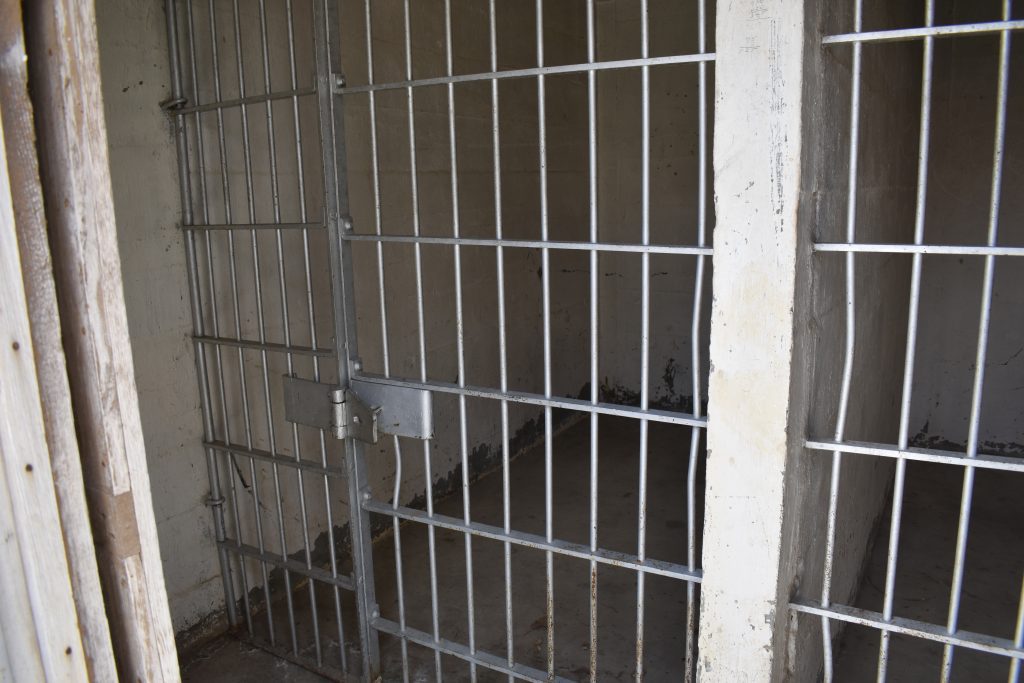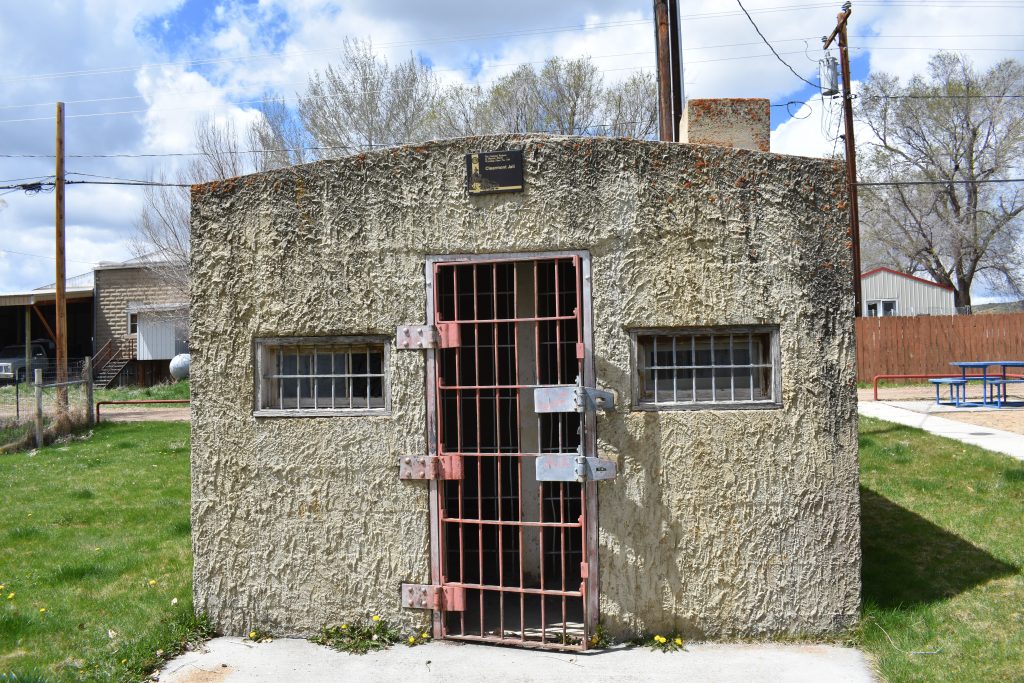News
“Bloody Clearmont” needed a jail in 1922
Published
3 years agoon
By
cvannoyPhoto courtesy Wyoming State Historic Preservation Office Photo Collection Photographer Liz Stambaugh no date on photo.
On May 14, 1984, the Old Clearmont Jail was added to the National Register of Historic Places. Ann Arndt, former Clearmont teacher, was instrumental in making sure that the old jail was included in the Registry.
The town of Clearmont was founded in 1892 with the coming of the railroad. In 1893, work was begun on a rail line running from Clearmont to the Town of Sheridan.
In this early period of Clearmont’s history, much of the business in the valley was cattle ranching. The great numbers of cowboys who descended on Clearmont every Saturday night, sometimes engaging in gun play, gave the town the reputation of “Bloody Clearmont.” In addition to the cowboys, railroad workers would sometimes get drunk and add to the general confusion. A visitor at this time (1896) commented that “there were about a dozen little shacks in Clearmont covered with black tar paper with laths nailed in to hold the paper.”
A dozen years later, another traveler noted that the town had grown, having “a couple of saloons, two stores and a railroad station.” Clearmont was incorporated in 1919 and in that same year, the Clearmont Town Council authorized construction of a jail.
In April, 1922, the Town Council accepted a bid from Wilkens and Cooper for $827.00 to construct a jail; the building was completed the same year.
Later that year, Frank Dunkin began a long and stormy career as Clearmont’s Town Marshal.
Marshal Dunkin impressed the citizens of the town with his boxing ability one day when he gave Pete Redman a real beating, either before or after Redman appeared before a justice of peace to answer to the charge of, “roping the town marshal and relieving him of his official badge and revolver.”
From that day on, Frank Dunkin was remembered as a “gutty little man” who never carried a gun, but who could march a whole line of gandy dancers to jail all by himself. It is reported that Frank Dunkin used the jail a lot, mostly for drunks and bootleggers.

The old jail was an effective deterrent to crime in those days, because it didn’t have any modern facilities.
In The Daily Boomerang, Laramie, Wyoming August 22, 1922 the following article appeared.
Postmaster Jailed At Clearmont, Charge Of Making Moonshine CLEARMONT, Wyo., Aug. 22.— John Toner of Kendrlck was arrested by Revenue Officer Bruce Hodge under a federal warrant charging him with violation of the prohibition law, and is now confined m the Clearmont Jail, not being able to furnish the $1,000 bond required by United States Commissioner Edgar K. Morrow for appearance in court at Cheyenne during September.
Two stills were found on the Toner ranch and 11 gallons of the finished product. One of them had a daily capacity of only ten gallons. For years Toner was in the employ of the government as mail clerk, and is the present postmaster at Kendrick.
Louis Livingston, who was arrested by Officer Hodge and charged with transporting liquor, is still confined m the Clearmont city jail, unable to furnish the required $1,000 bond for his appearance at court in Cheyenne.
In 1924, the town decided to buy a stove for the jail, which was otherwise unheated. In December of that year, Wilson Clark was appointed as Clearmont’s Marshal and Water Commissioner, and he resigned in 1926. Frank Dunkin was reinstated at the same meeting when Clark resigned. It is not known exactly how long Frank Dunkin held the job.
Other peace officers in Clearmont were: Marshal Levi Arndt, 1930s, who used the old jail many times. Ont time Marshal Arndt heard screams coming from the jail. Rushing in Arndt discovered that a wayward skunk was sharing the bunk with a prisoner.
Ted Wintermute in the early 1940s; then Tex Ellis during WW2. Carl Sneed was there briefly after that.
Marshall Bill Campbell used the jail frequently, mostly for restraining temporary railroad workers who would, “go on a drunk and tear around” after paydays. Marshal Campbell’s son, Cameron, believed that the old jail was an effective deterrent to crime in those days, because it didn’t have any modern facilities. Prisoners were taken to a cafe to eat, and back at the jail they were given a can to serve as a toilet.
The Clearmont Jail was used for the last time on the night before Father’s Day in June, 1961. Two juveniles were arrested for public intoxication. The arresting officer, Albert Jennings, was Clearmont Town Marshal for many years.
The boys spent one night in jail and were released in time for church the next day.
Today, the Clearmont Jail still stands near the water tower in Branding Iron Park. The Jail is 12 feet wide by 14 feet 4 inches long and 9 feet high. Two barred windows on the jail front measure 1 1 5″ x 2′ 7″, and the barred front door is 2 ! x 10″ x 6′ 8′. A wooden door inside the front barred door offered some protection from the weather when closed; the original glass panes in this door have been replaced with plywood, part of which is broken. But it is still a testament to the frontier era, when being in jail was not an experience to recommended.

Note: Most of the information on the jail was compiled by Ann Arndt and by John Meich, student who wrote an article titled, “About the Clearmont Jail.” A-C News Roundup. Vol. 1, No. 3, (November 6, 1981). Arvada-Clearmont School, Clearmont, Wyoming, page 7. Also included as reference were old newspapers.


Christa Grywusiewicz
May 17, 2021 at 8:29 am
Very interesting read. I think we ought to go back to this type of jail….might really cut down on the number of people willing to take that chance!!